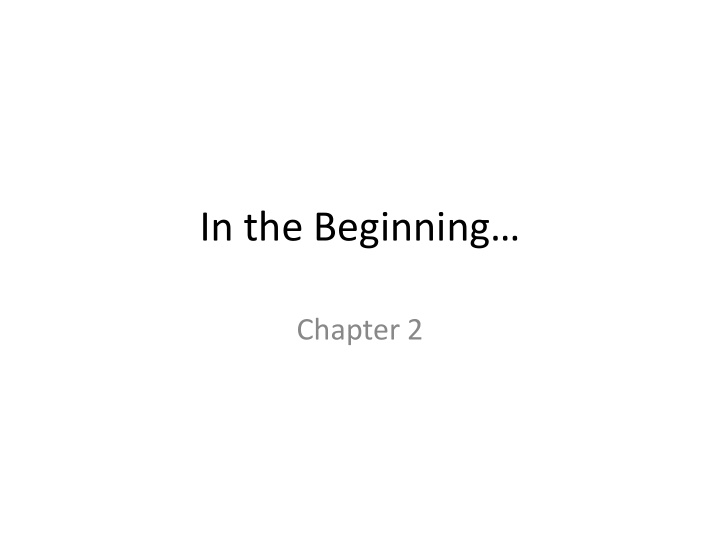



In the Beginning… Chapter 2
Mythbusters • One way cultures/groups define and sustain themselves is through “myths” – Stories, legends, values, events that separate “us” from “them” • Some of the most important of these are about origins , called “foundational myths”
• You learned ours in kindergarten
• Successful myths have large grains of truth in them – The myths around the American foundings are no different – However, one myth in particular deserves busting
Colonial America • Colonialism was an economic and political system – All the major powers (Britain, France, Spain) practiced it – Most of Africa, North America, South America divided up
• British colonies in N. America were different from most of the rest of the colonial world – Settlers themselves were white, Christian, British – Small, widely spread, relatively peaceful native population
Colonial Government • “Home Rule” – Britain’s focus was trade, not government • Unlike pretty much everywhere else in the world, the American experience has always been one of “democracy”
• By 1650, all 13 colonies have elected legislatures – Pass laws & taxes – Debate, argument, compromise is the norm – Politicians! – Problems
What goes wrong? • The usual – Wars, taxes, bad choices • Impact of 7 Years’ War (French & Indian Wars) – Increasing American resentment of British gov’t
Revolutionary America • Articles of Confederation – Def: A system of government where a weak national government is given limited powers by independent states • Designed to preserve most of the features of home rule
Articles of Confederation • Features: – Unicameral legislature (Congress of the Confederation) – One vote per state • Each state is equal – 9 out of 13 states needed to pass laws – Unanimous vote needed for amendments
• Problems: – States not required to help defend other states – No power to tax – Unanimous vote needed for amendments – Aftermath of war - Shays’s Rebellion
Drafting the Constitution • Created a republic to replace the confederation – Def: A government where citizens elect officeholders to govern on their behalf • AKA “indirect democracy,” “representative democracy” • Problem: gov’t will be more powerful than most would prefer
• From the beginning, the Framers wanted to balance 2 sets of competing goals: 1. An effective (powerful) government that would still be limited 2. Rights of citizens vs. rights of states • Institutional design
Engineering the Constitution • “Something old, something new” – Separation of powers – 3 “branches” of government with overlapping power • “Checks and balances” – Federalism – government’s responsibilities divided into those of the states and those of the national government
• 2 competing proposals for the new government – “Virginia Plan” – advocated by delegates from large-population states • Bicameral legislature • House of Representatives selects Senators, President, Supreme Court • National government more powerful than state governments
• “New Jersey Plan” – competing proposal offered by smaller states – Unicameral legislature – Each state gets one vote in national government – Congress given tax powers – Eased unanimity requirement for amending Articles of Confederation
Compromising the Constitution • Neither proposal had enough support to pass on its own. • Result: “the Great Compromise” – Bicameral legislature • One chamber based on state population – President selected by Electoral College – Many guarantees of state’s rights • Slavery
Checks and Balances President Congress Supreme Court nomination of President XXX veto legislation Justices Override veto, impeachment, "advice & consent," constitutional Congress XXX impeachment, amendments, budget legislation Supreme Court Judicial review Judicial review XXX
Recommend
More recommend